St. James Parish History
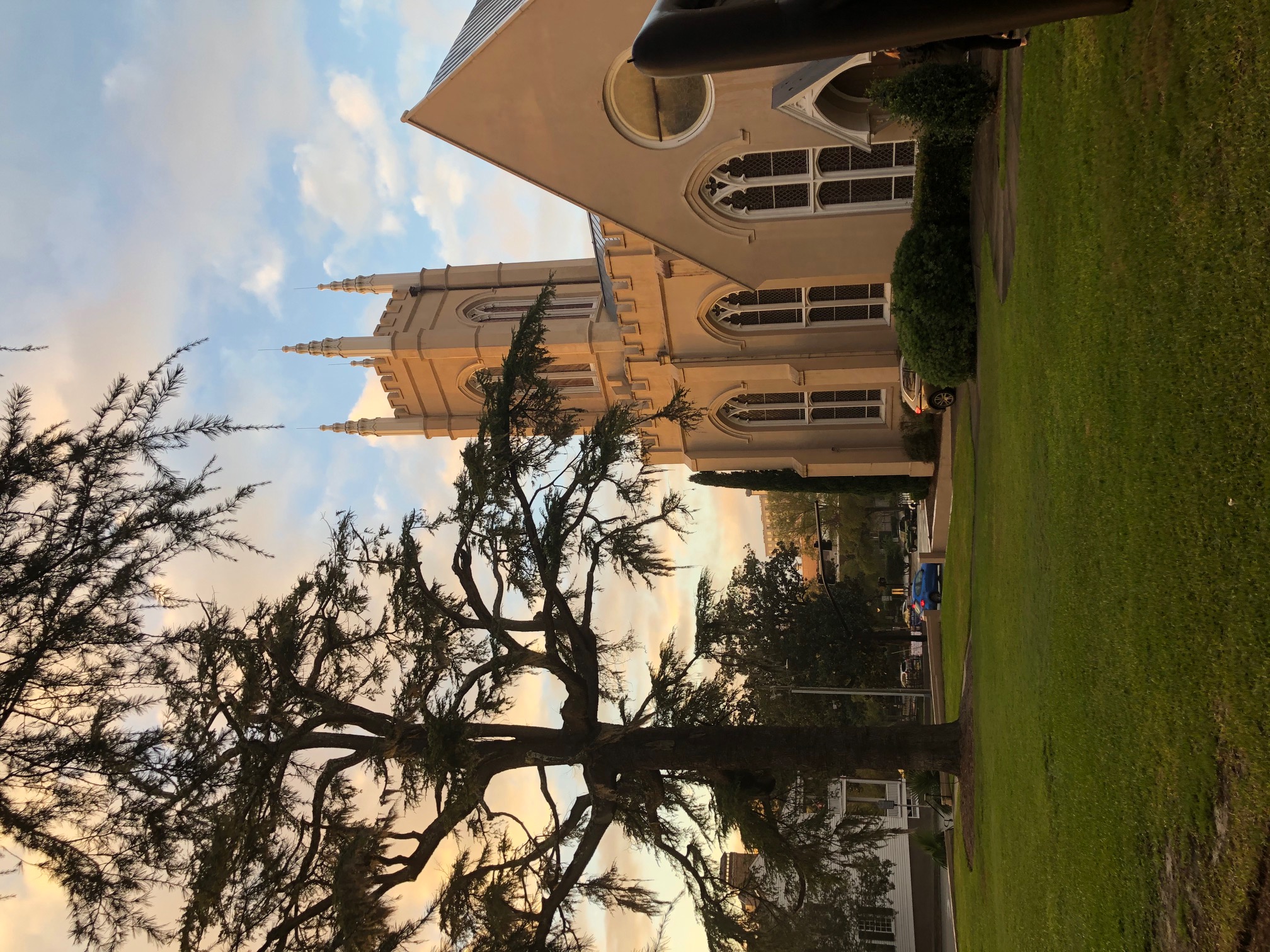 St. James Parish was established in 1729 when the North Carolina General Assembly passed an act establishing “New Hanover Precinct”, which included a “separate and district parish by the name of St. James.” As such, the parish was an official establishment of the Church of England within the New Hanover Precinct in those pre-revolutionary days. Church services were originally held in the courthouse located at the intersection of Front and Market Streets.
St. James Parish was established in 1729 when the North Carolina General Assembly passed an act establishing “New Hanover Precinct”, which included a “separate and district parish by the name of St. James.” As such, the parish was an official establishment of the Church of England within the New Hanover Precinct in those pre-revolutionary days. Church services were originally held in the courthouse located at the intersection of Front and Market Streets.
Erection of the first building was authorized in 1751 on land already set aside for the church. The modest church structure, eventually completed in 1770, was located along Market Street (actually partially extending into Market Street) between 3rd and 4th Streets (near the present Parish House). The building was used until March 1839 when it was demolished.
During the Revolutionary War in 1781, Wilmington was occupied by British soldiers under the command of General Charles Cornwallis. The St. James church building was turned into a stable, perhaps on the assumption that the property was owned by the Crown of England and therefore available as a resource for war needs.
Bricks from the first building (which had probably been manufactured at the site of the original construction) were used for the construction of the present church building which was completed and consecrated on March 29, 1840. The new building was designed in “a simple, academic Gothic Revival style” by Thomas U. Walter, a Philadelphia architect who is best known for his design of the Capitol expansion in Washington DC in the 1850s which included the House and Senate wings as well as the Capitol dome. Because the church had no central heating, the pews were enclosed by doors and hinges which were later removed in 1884.
In February 1865, Union forces entered Wilmington near the end of the Civil War. The church building of St. James was seized and church services were halted; pews were removed from the church and it was used as a hospital. In the summer of 1865, the church was returned to the congregation and repairs were completed in time to allow the resumption of services on December 8, 1865. It was not until 1905 that the parish received compensation from the Federal government, in the amount of about $3,000, for the damages that had been done to the church in 1865.
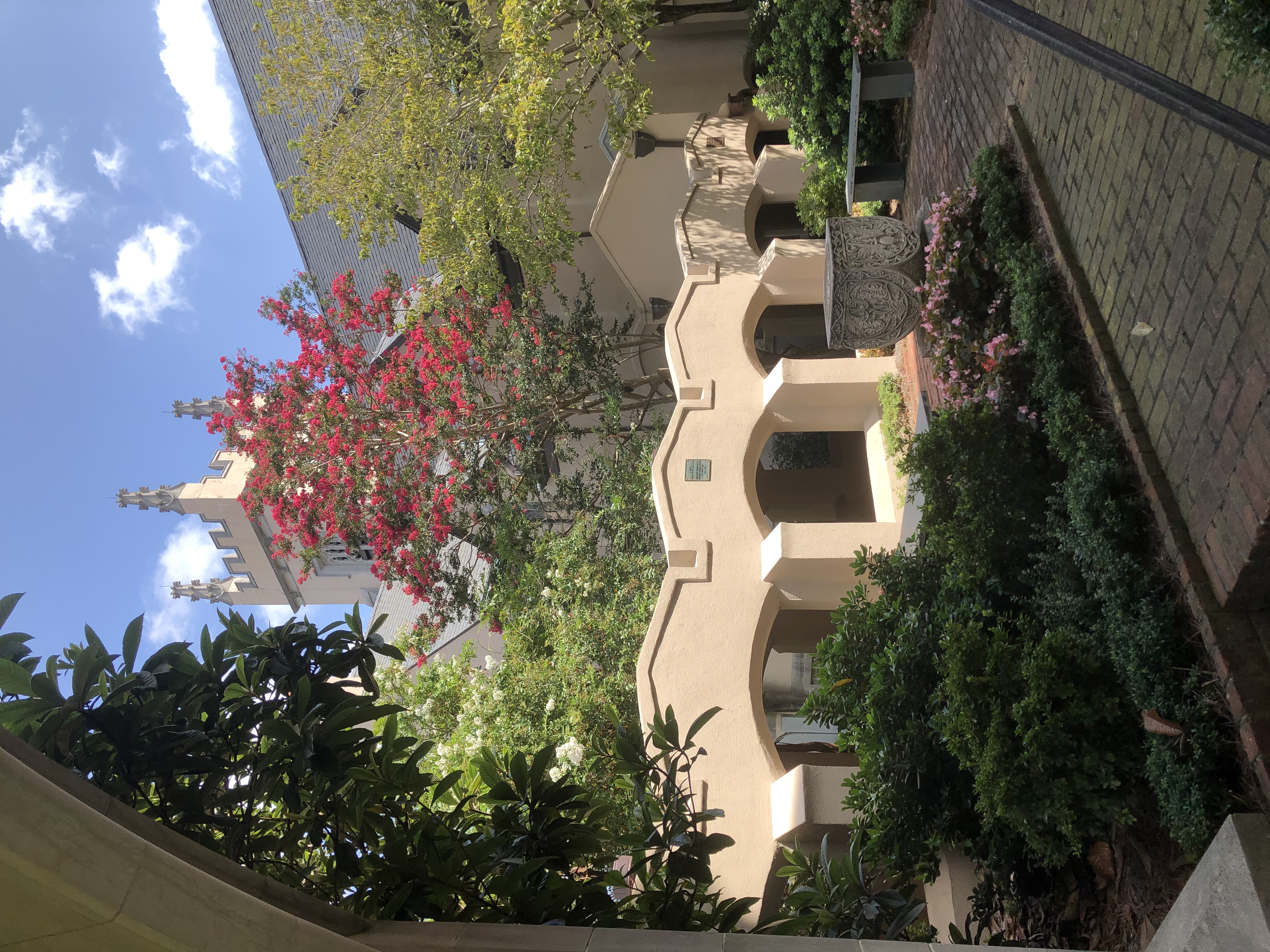 In 1871, the ceiling of the nave and the roof of the church required major repairs; the repairs included replacing the arched plaster ceiling with a gabled ceiling featuring oak hammer beams. In 1885, the chancel (altar) area of the church was expanded and the south transept was added; the architect was Henry Dudley of New York City. In 1889, the galleries along the sides of the nave were removed, but the rear gallery was maintained and now serves as the choir loft.
In 1871, the ceiling of the nave and the roof of the church required major repairs; the repairs included replacing the arched plaster ceiling with a gabled ceiling featuring oak hammer beams. In 1885, the chancel (altar) area of the church was expanded and the south transept was added; the architect was Henry Dudley of New York City. In 1889, the galleries along the sides of the nave were removed, but the rear gallery was maintained and now serves as the choir loft.
In 1891, the lower walls of the nave were wainscoted to match the transept; and in 1892, Silas McBee of Sewanee Tennessee completed carvings for the main altar and reredos of the church.
In 1966 the organ and organ pipes were moved from the chancel area to the balcony. This required alterations to the cancel and allowed the Murchison-Curtis Chapel to be built where the organ pipes had been housed. The Church Tower was determined to be unstable and in 2010 and it was completely restored. The entire interior of the Church was renovated and restored in 2012.
In 1892, the Bridgers Memorial Building was completed, honoring Robert R. Bridgers, a prominent citizen of Wilmington who had been a member of the North Carolina General Assembly. The Bridgers Building is located behind and to the south side of the church building, containing classrooms. This building replaced a much older building, known as Society Hall of the Women’s Working Association, built in 1834. In 1912, a cloister was added linking the Bridgers Building and the church.
In 1923-24, the Parish House was built behind the church, providing a spacious parish hall (the “Great Hall”) and classrooms for St. James and featuring a beautiful tower similar in design to the church tower. The Parish House was designed by Hobart Upjohn, a noted New York church architect who designed a number of buildings in North Carolina, including First Presbyterian Church in Wilmington (1927-28). Hobart Upjohn was the grandson of Richard Upjohn, the architect of the Trinity Church on Wall Street in New York City (1847) as well as Christ Church on Capitol Square in Raleigh (1848).
In May 1941, months before Pearl Harbor Day, preparations were made in Wilmington to welcome soldiers to local churches. St. James provided space in the Parish House basement so that soldiers could spend Saturday nights in town. The U.S. Army provided cots and blankets. On Sunday mornings, the service men “packed the pews”; and after the service, parishioners hosted them for Sunday dinner.
The Parish House welcomed the first Head Start program for children in the 1960's and housed the Elderhaus Day Program in the 1980's.
For a period of approximately 10 years, beginning in the 1980s, St. James provided a shelter for homeless people in the basement of the Parish House. The shelter and related ministries were maintained at the parish until they became part of the Good Shepherd Center in Wilmington. St. James has continued to support the ministry of the Good Shepherd Center since that transition, most recently providing major support for the construction of affordable, permanent housing for previously homeless persons, located at Greenfield Lake in Wilmington.
In 1955-56, Milton Hall (containing classrooms and an assembly hall) was built, designed by Charles H. Boney of the Leslie N. Boney firm in Wilmington, and located adjacent to and connected to the south side of the Bridgers Memorial Building. Cloisters were also added linking Milton Hall with other structures on the church grounds. The cloister design was inspired by the famous cloisters at Salisbury Cathedral in England. Milton Hall was named for the Rev. Dr. William H. Milton, a much-respected rector of St. James from 1909 to 1936 who also was a prominent member of the National Council of the Episcopal Church.
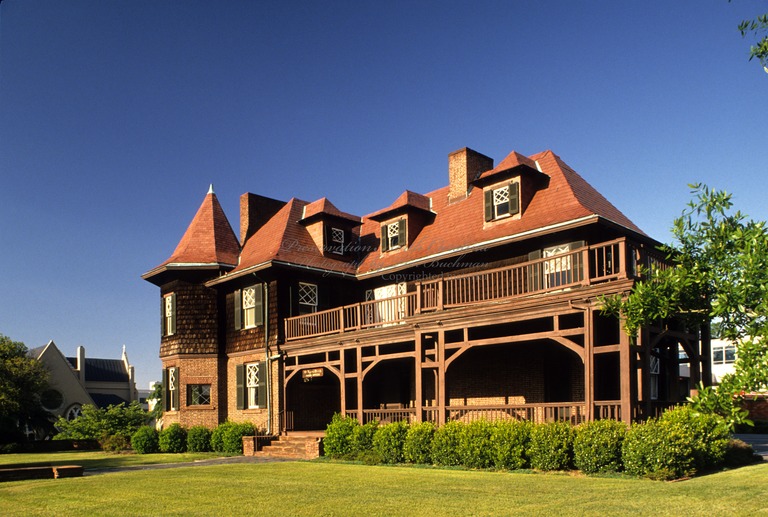
In 1955, the former Donald MacRae House at the corner of Dock and 3rd Streets was acquired by the parish. This house, originally built in 1901, was designed by the renowned architect Henry Bacon, best known for designing the Lincoln Memorial in Washington DC. This house was completely renovated in 2011, renamed and dedicated to the memory of Ann Moore Bacon, whose sons had made a generous gift for the renovation. The Bacon House now houses the parish offices.
In the late 1990s, St. James Parish acquired the property located at the corner of Dock and 4th Streets which had been previously owned and utilized by the Wilmington Fire Department. With this acquisition, the parish then owned an entire city block bounded by 3rd, Market, 4th and Dock Streets. A new, multipurpose hall was built on the site and dedicated on Palm Sunday 2000. The structure was named in memory of Marie and Albert Perry, whose children had made a generous gift for the new building.
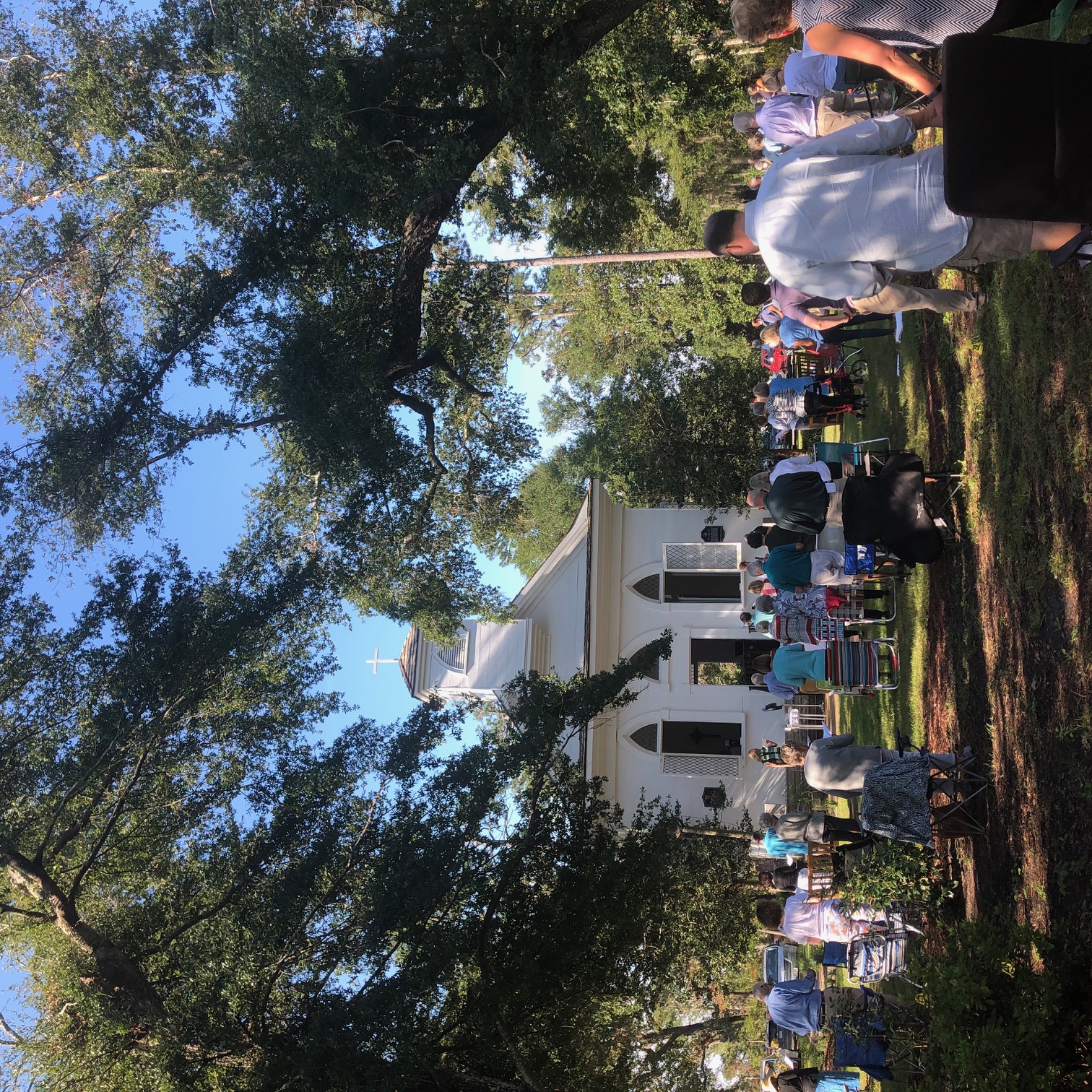
Another important parish structure, Mt. Lebanon Chapel, is located several miles from the downtown church grounds, off Oleander Drive on Airlie Rd., adjacent to Airlie Gardens and close to Wrightsville Sound. Mt. Lebanon Chapel is a simple, rustic chapel, open to the wooded area surrounding it. It was originally built in 1835 to serve parishioners and others vacationing at the beach who could not otherwise complete the several-hour trip into town and back in order to attend church. The chapel was named by the original owner of the land on which it is situated.
Judge Joshua G. Wright, for whom Wrightsville Beach is named, chose the name “Mt. Lebanon” because of the many cedar trees which reminded the Wright family of the fabled cedars of Lebanon from Old Testament history.
The property on which Mt. Lebanon Chapel is situated was later donated to the parish in 1875. Over the many years since then, the chapel has been maintained by St. James Parish, with several major renovations; and today the chapel offers a welcome location for summer chapel services, weddings, and other special events.
Throughout the years since its founding in 1729, St. James has been blessed with loyal parishioners and dedicated clergy who have led the parish through difficult as well as prosperous times, always remembering that the church must serve not only its members, but those within the community of Wilmington and beyond.
The history of St. James Parish is well documented in a fine book by noted local historian, Susan Taylor Block, who is a member of our parish. Copies of Temple of Our Fathers (published by ARTSPEAKS in 2004), may be purchased at our parish gift shop.
A dedicated archivist at St. James Parish, the late Leora Hiatt McEachern, has also written a History of St. James Parish, 1729 – 1979, completed in 1985 with the assistance of Bill Reaves, containing many interesting details of the history of the parish and its rectors.
Extensive historical information about St. James is also contained in Wilmington, North Carolina: An Architectural and Historical Portrait, Tony P. Wrenn and William Edmund Barrett (Univ. of Virginia Press, 1984; see pp. 78 - 82).
We would also like to acknowledge the work of the late Edward F. Turberg (1939 – 2018), a beloved parishioner and noted architectural historian, who reviewed and edited this brief history and who generously gave of his time to conduct tours of St. James for parishioners, visitors, and newcomers.
St. James Parish Foundation
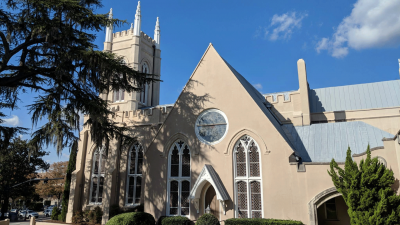
Give a gift to The St. James Parish Foundation to leave a lasting legacy.
Looking for other ways to give?
DOWNLOAD OUR WAYS TO GIVE PACKET
Mt. Lebanon Chapel
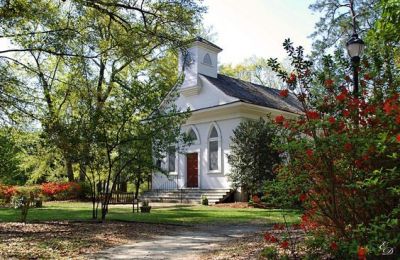
Mt. Lebanon Chapel welcomes all who would worship here. We urge all who enter to spend a moment of quiet surrounded by the peace of God which passeth all understanding.
HISTORY
In the early 1830s, Dr. Thomas Henry Wright conceived the idea to build Mt. Lebanon Chapel. The chapel was to serve those members of St. James who lived in the vi…
Read More »All Saints Memorial Garden at Mt Lebanon Chapel
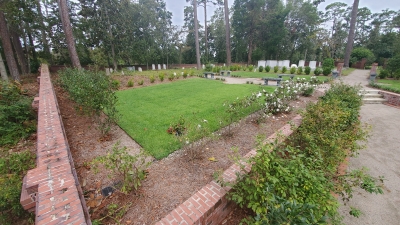
All Saints' Memorial Garden - Lebanon Chapel
- Sale of plots are now on a first-come, first-served basis to the parishioners of St. James Parish and St. Andrew's-On-The Sound.
- Within the existing cemetery on the Mount Lebanon Chapel grounds, All Saints' Memorial Garden has bee…